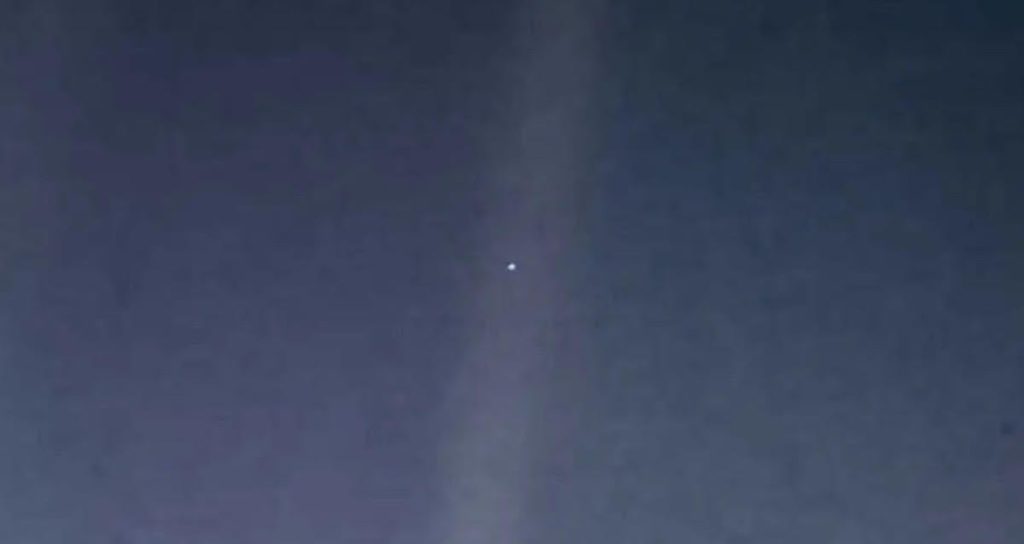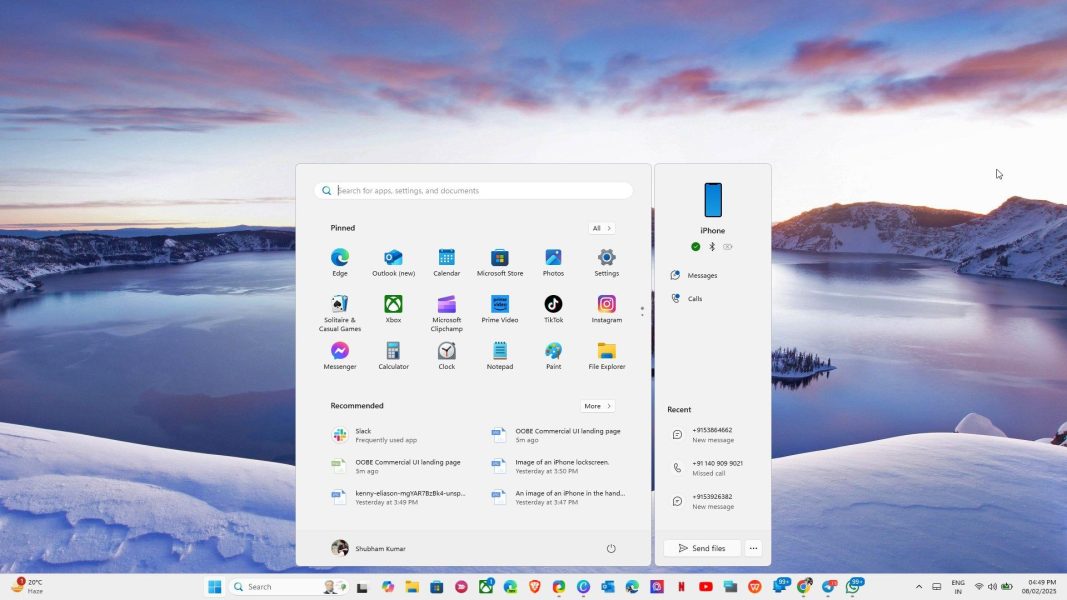‘Pale Blue Dot’: The Story Behind The Iconic Photo – All That’s Interesting

NASA/JPL-CaltechThe image “Pale Blue Dot” taken on Feb. 14, 1990 by NASA’s Voyager 1. Earth is located within the rightmost light beam. Suspended in a sunbeam, a tiny speck of light we all call home reminds us of our shared fragility and the vastness of the cosmos. This speck, seen in Voyager 1’s famous “Pale Blue Dot” image, shows what the Earth really looks like from billions of miles away. Launched by NASA in 1977, Voyager 1 was designed to explore the outer areas of our solar system. Sent out shortly after its slower twin, Voyager 2, the space probe captured astonishing images of planets like Jupiter and Saturn. In 1990, as Voyager 1 approached the edge of the solar system, NASA commanded it to take a “family portrait” of the planets. Among the images was the “Pale Blue Dot,” a photo of Earth captured from 3.7 billion miles away from the Sun. In it, Earth appears as a tiny speck in a ray of sunlight. To this day, it’s one of the most famous pictures of Earth from space.U.S. Army/White Sands Missile Range/Applied Physics LaboratoryThe first picture of Earth from space, taken in 1946 (decades before the “Pale Blue Dot” image was captured). On October 24, 1946, a V-2 missile was launched from the White Sands Missile Range in New Mexico, carrying a 35-millimeter motion picture camera. Roughly 65 miles above Earth’s surface, the camera captured the first-ever image of Earth from space before crashing back down to Earth. While the camera was irreparably damaged, the film was unharmed. In 1958, NASA’s Explorer 1 became the first satellite successfully launched by the United States — and it also provided the first data ever transmitted from space. A year later, the first photograph of Earth from orbit was taken from Explorer 6, approximately 17,000 miles above Earth’s surface. NASAThe first crude picture obtained from Explorer 6, showing the Pacific Ocean.Then, in 1965, NASA captured the first global view of the world’s weather. The data was collected by the Television Infrared Observation Satellite (TIROS), which compiled 450 images of the Earth’s weather patterns. National Oceanic and Atmospheric Administration/Department of CommerceThe first global view of Earth’s weather patterns.A year later, NASA released a photo taken by the Applications Technology Satellite 1 (ATS-1), showing Earth and the Moon together for the first time. The satellite was about 270,000 miles from the Moon and about 22,300 miles from Earth’s surface when it captured the image. NASAThe first image of both the Earth and the Moon. It wasn’t long before NASA released numerous color images of the Earth. Some of the most famous photos were captured during the Apollo missions. Reflecting on seeing the Earth from the Moon during the Apollo 8 mission, Command Module Pilot Jim Lovell said that the views were “awe-inspiring, and it makes you realize just what you have back there on Earth. The Earth from here is a grand oasis to the big vastness of space.”While most people will not experience these views from space themselves, the images captured over the decades have instilled a deep sense of wonder and humility for many. One picture especially stands out: the “Pale Blue Dot,” an image of Earth taken by Voyager 1, a spacecraft billions of miles away.Public DomainResearchers working on Voyager 1. In the 1960s, NASA proposed the idea of launching a new mission to explore our solar system. Researchers settled on building twin space probes. Built by the Jet Propulsion Laboratory of NASA, Voyager 1 and Voyager 2 were crafted with large antennas to communicate with NASA on Earth. And if the space probes happened to lose communication, they were also fashioned with a recorder to document information for later transmission. Before launching the probes, NASA fastened the famous Golden Record on Voyager 1 and Voyager 2. This record contained images, spoken greetings in 55 languages, and various sounds, including thunder, birds, and musical selections from different cultures and historical periods. It was designed in case the Voyager space probes ever made contact with extraterrestrial life.Public DomainResearchers fastening the Golden Record to Voyager 1. On September 5, 1977, Voyager 1 was launched into space from Cape Canaveral, Florida. By that point, Voyager 2 had already been launched on August 20, 1977, albeit on a slower path than Voyager 1.By early 1979, Voyager 1 had reached Jupiter and documented the largest planet in our solar system. By late 1980, it had flown past Saturn.In 2012, Voyager 1 became the first human-made object to enter interstellar space. However, some of its most famous contributions to history are its incredible images of our solar system’s planets, including the “Pale Blue Dot” photo that has captured the world’s attention for decades now. NASA/JPL-CaltechNASA’s estimates of Voyager 1’s perspective when it took the “Pale Blue Dot” image.On Feb. 14, 1990, Voyager 1 was quickly approaching the outer areas of our solar system — beyond Neptune — when NASA mission managers commanded the space probe to turn around and snap an image of Earth. The image was captured roughly 3.7 billion miles from our Sun, as part of a 60-image collection that would later be known as the “family portrait.” The images were taken around 04:48 GMT on Feb. 14, 1990, only 34 minutes before Voyager 1’s cameras were permanently powered off — a move made to preserve the space probe’s energy for its journey ahead.Originally, most members of the Voyager 1 team didn’t want to take the “Pale Blue Dot” photo because of limited engineering resources and the potential dangers of pointing the space probe’s camera toward the Sun. But astronomer Carl Sagan insisted that it would be worth the risk.The images arrived on Earth on May 1, 1990, and NASA employees immediately realized they had indeed captured something special. That’s not to say there weren’t issues with the “family portrait.” According to NASA, Mars was obscured by sunlight, Mercury was too close to the Sun to be seen, and Pluto was too small to be detected. Despite these problems, the “family portrait” series was still a wonder to behold, and it remains the first and only time a spacecraft has tried to photograph our solar system.The “Pale Blue Dot” image became the most famous, as it captured Earth as a small speck surrounded by the vast cosmos. The photo eventually inspired a mosaic in the Theodore von Kármán Auditorium at NASA (which soon had to be replaced because people kept touching the “dot”).Carl Sagan was so pleased with the image that he later went on to publish a book titled Pale Blue Dot: A Vision of the Human Future in Space. He also gave a moving, memorable description of the iconic picture:“That’s here. That’s home. That’s us. On it, everyone you ever heard of, every human being who ever lived, lived out their lives. The aggregate of all our joys and sufferings, thousands of confident religions, ideologies and economic doctrines, every hunter and forager, every hero and coward, every creator and destroyer of civilizations, every king and peasant, every young couple in love, every hopeful child, every mother and father, every inventor and explorer, every teacher of morals, every corrupt politician, every superstar, every supreme leader, every saint and sinner in the history of our species, lived there on a mote of dust, suspended in a sunbeam.The earth is a very small stage in a vast cosmic arena. Think of the rivers of blood spilled by all those generals and emperors so that in glory and in triumph they could become the momentary masters of a fraction of a dot. Think of the endless cruelties visited by the inhabitants of one corner of the dot on scarcely distinguishable inhabitants of some other corner of the dot. How frequent their misunderstandings, how eager they are to kill one another, how fervent their hatreds. Our posturings, our imagined self-importance, the delusion that we have some privileged position in the universe, are challenged by this point of pale light.Our planet is a lonely speck in the great enveloping cosmic dark. In our obscurity — in all this vastness — there is no hint that help will come from elsewhere to save us from ourselves. It is up to us. It’s been said that astronomy is a humbling, and I might add, a character building experience. To my mind, there is perhaps no better demonstration of the folly of human conceits than this distant image of our tiny world. To me, it underscores our responsibility to deal more kindly and compassionately with one another and to preserve and cherish that pale blue dot, the only home we’ve ever known.”It may have taken Sagan eight years to get approval for the picture, but clearly, he knew it was worth it. Now, countless others do too.After reading about the iconic “Pale Blue Dot” image, check out photos of NASA landings throughout the decades. Then, learn about Jack Parsons, the occultist behind NASA’s Jet Propulsion Laboratory.
PO Box 24091
Brooklyn, NY 11202-4091






